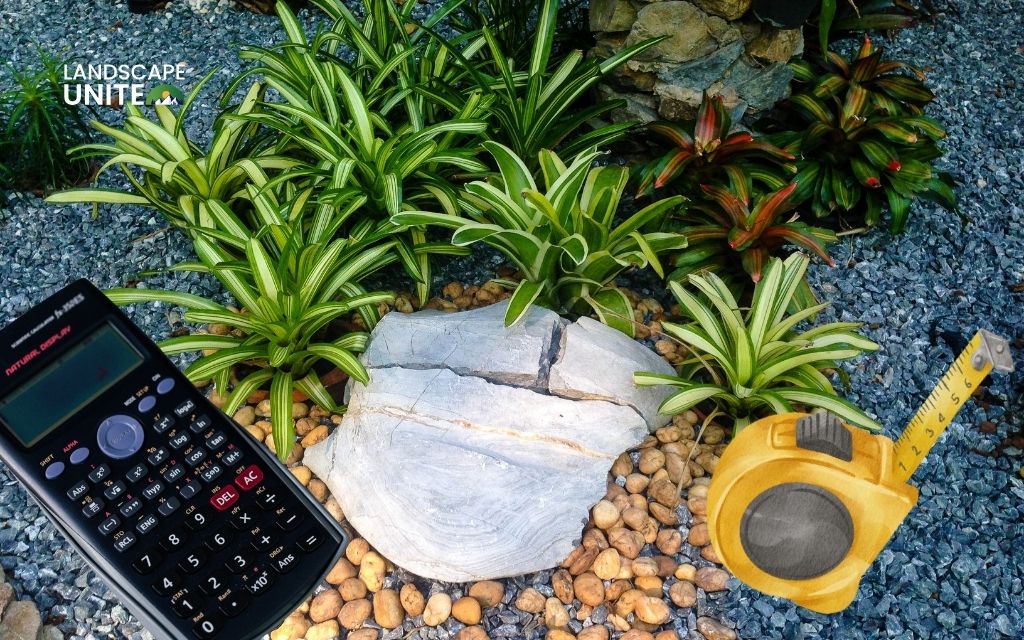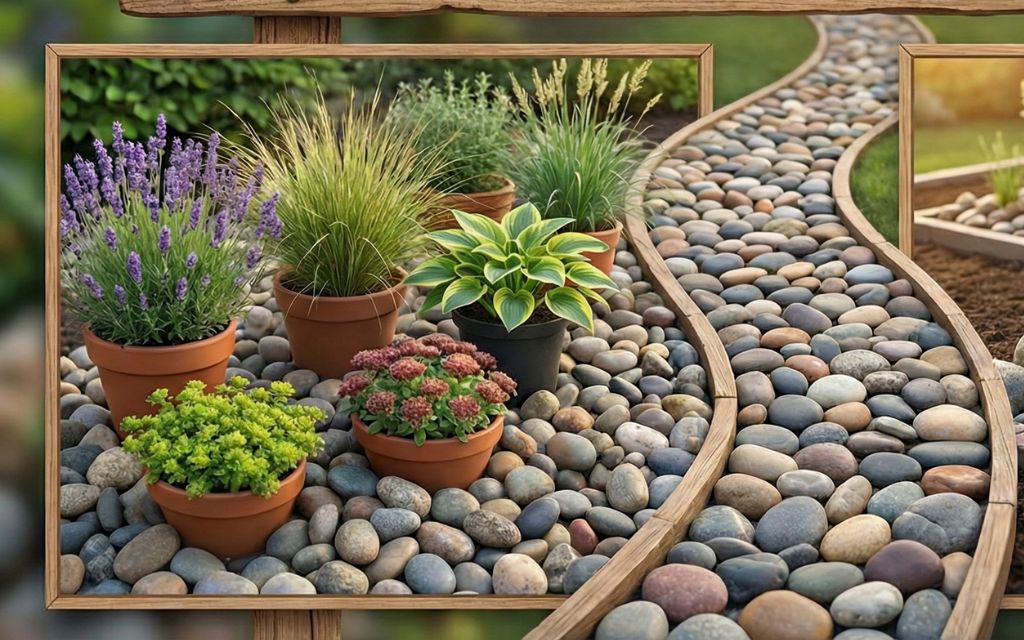Artificial grass has transformed countless American yards from maintenance-heavy lawns into low-maintenance landscapes. However, like any landscaping solution, synthetic turf comes with its own set of challenges that homeowners should be aware of before installation.
Understanding these problems with artificial grass isn’t meant to discourage you from choosing artificial grass, but rather to prepare you for informed decision-making and maintenance practices.
Keep reading to learn more about the 11 most common artificial grass problems and practical solutions to address them effectively.
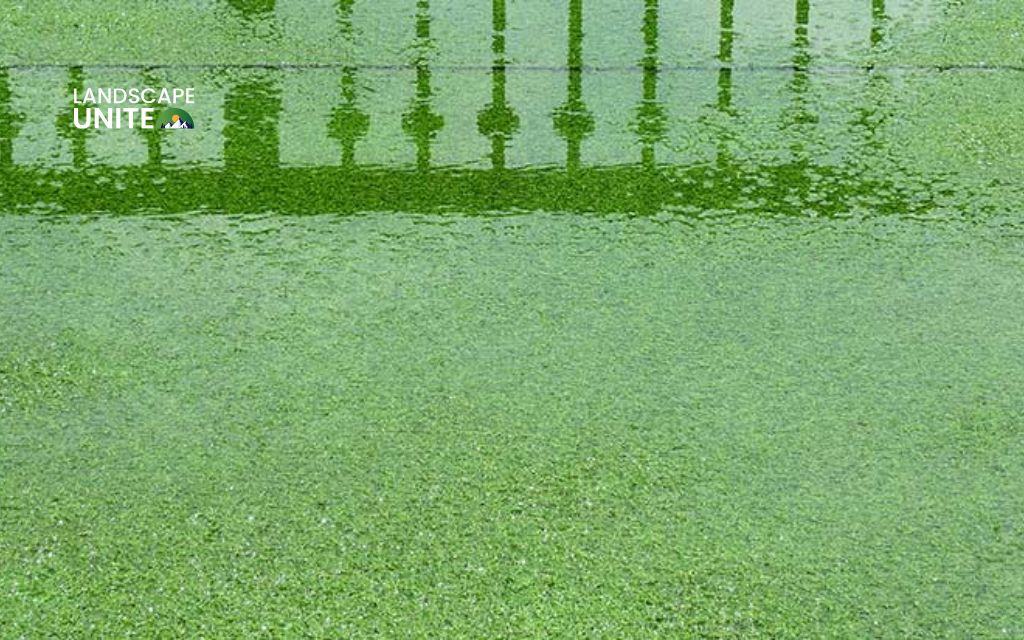
11 common problems with artificial grass
Here are the most common issues that homeowners face with artificial grass and solutions to address them.
1. Artificial grass fading and discoloration
Prolonged exposure to sunlight, weather conditions, or poor-quality materials can cause the fibers to lose their color.
UV radiation breaks down the polymer structure in synthetic grass fibers, leading to color degradation over time. This is particularly problematic in regions with intense sunlight exposure, such as the Southwest United States.
Solution:
- Choose high-quality UV-resistant turf with advanced polymer technology
- Consider using a turf protector or sunshades in extreme weather conditions
- Ensure proper maintenance to keep the color vibrant through regular cleaning
- Look for products with extended UV warranties for added protection
2. Heat retention and high temperatures
Artificial grass absorbs and retains heat, making it hot to the touch during warm weather. Unlike natural grass that cools through evapotranspiration, synthetic turf can reach temperatures of 140-180°F in direct sunlight, creating uncomfortable surfaces for bare feet and pets.
Solution:
- Use cool-down techniques such as spraying the turf with water before use
- Select cooling artificial grass products designed to lower heat absorption
- Create shaded areas in your yard with trees, pergolas, or umbrellas
- Consider installing turf with lighter colors or reflective properties
- Apply cooling infill materials like silica sand or rubber alternatives
3. Odor problems from pet waste
Dog urine and feces can lead to unpleasant odors if not cleaned up promptly.
Unlike natural soil that can absorb and break down organic matter, artificial grass backing and infill materials can trap odor-causing bacteria, especially in areas with poor ventilation or drainage.
Solution:
- Rinse the turf immediately after pet accidents to prevent odor build-up
- Use a pet-safe turf deodorizer to neutralize smells effectively
- Regularly clean and wash the turf to maintain freshness
- Install antimicrobial infill materials designed for pet areas
- Ensure proper drainage to prevent urine pooling
You can learn how to clean artificial grass to prevent odor problems in this guide.
4. Toxicity concerns
Is artificial grass toxic? Some artificial grass can be made with harmful chemicals or low-quality materials, including lead-based compounds, volatile organic compounds (VOCs), and other potentially hazardous substances that may pose health risks.
Solution:
- Choose lead-free, non-toxic artificial grass products certified by reputable organizations
- Look for grass made with safe, eco-friendly materials and PFAS-free options
- Request material safety data sheets (MSDS) from manufacturers
Is artificial grass toxic to dogs?
While most modern artificial grass products are designed to be pet-safe, some lower-quality options may contain materials that could be harmful if ingested or cause skin irritation.
- Look for pet-safe turf options that are specifically designed for families with pets
- Choose products with antimicrobial properties to reduce bacteria growth
- Avoid turf with sharp or abrasive infill materials that could injure paw pads
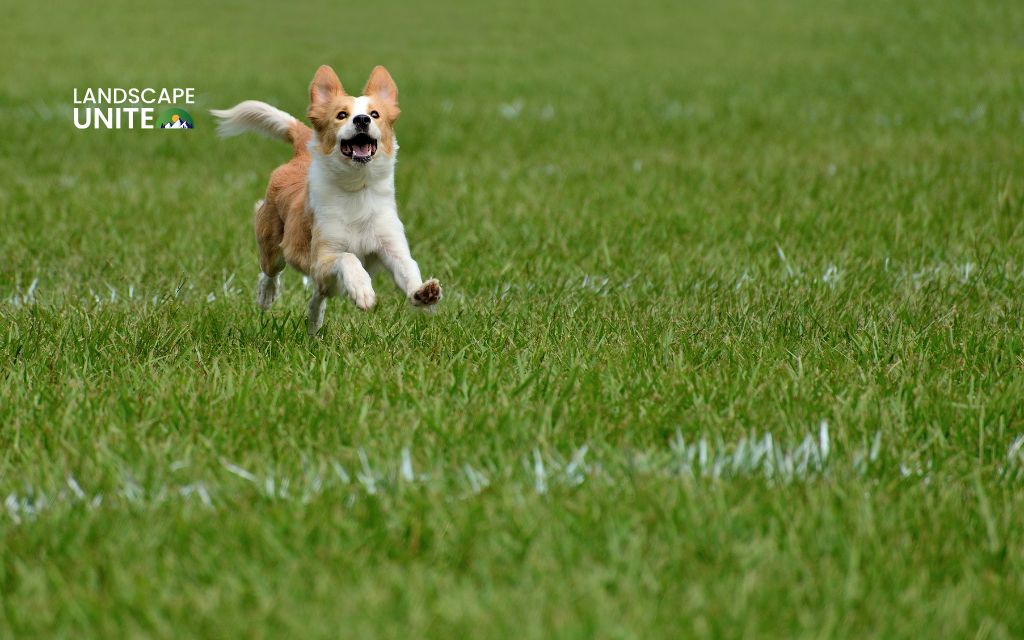
5. Drainage problems and pooling water
Poor drainage or improper installation can lead to water pooling on the surface.
Without adequate drainage systems, artificial grass can become waterlogged, leading to mold growth, odor issues, and premature deterioration of the backing material.
Solution:
- Ensure proper site preparation and grading before installation
- Add drainage holes or improve sub-base materials for better water flow
- Clean debris from drains to keep the water flowing freely
- Install French drains or other drainage systems in problem areas
- Use permeable base materials that facilitate water movement
6. Weeds and grass growth underneath turf
Weeds can grow through the seams or edges of the turf if the base isn’t properly prepared.
Seeds can find their way through gaps in installation or inadequate weed barrier systems, leading to unwanted vegetation that can lift and damage the synthetic surface.
Solution:
- Install a high-quality weed barrier fabric underneath the turf
- Use a professional installer to ensure proper sealing of seams
- Maintain the lawn by cleaning seams regularly and addressing any gaps
- Apply pre-emergent herbicides around turf edges as needed
- Ensure complete coverage during installation to prevent seed infiltration
7. Damage from sharp objects or heavy use
Sharp objects like rocks, glass, or nails, or heavy foot traffic, can damage synthetic grass fibers.
Solution:
- Install turf in areas with lower foot traffic or use rubber mats in high-traffic zones
- Regularly inspect the lawn for damage and repair small tears or punctures immediately
- Remove debris promptly to prevent fiber damage
- Consider higher-grade turf for areas with heavy use
- Implement traffic control measures in vulnerable areas

8. Inconsistent pile direction
Incorrect installation or lack of proper brushing can cause the artificial grass to flatten or develop inconsistent pile direction. This creates an unnatural appearance and can lead to premature wear patterns that affect both aesthetics and functionality.
Solution:
- Use a turf brush to regularly lift and reset the pile direction
- If the issue persists, contact a professional installer to ensure proper direction alignment
- Follow manufacturer guidelines for pile maintenance
- Brush in multiple directions to maintain consistent appearance
- Address flattened areas promptly to prevent permanent damage
9. Poor turf seaming
Seams that are not properly joined or sealed can cause the turf to pull apart over time.
Temperature fluctuations, ground movement, and foot traffic can stress poorly installed seams, creating visible gaps and potential safety hazards.
Solution:
- Ensure high-quality installation and proper seam sealing techniques
- Regularly inspect seams for wear and tear
- Address seaming issues immediately to prevent further deterioration
- Work with experienced installers who understand proper seaming techniques
10. Maintenance and cleaning challenges
While low-maintenance, artificial grass still requires regular care to stay clean and fresh. Many homeowners underestimate the ongoing maintenance requirements, leading to problems with appearance, hygiene, and longevity.
Solution:
- Brush the grass regularly to prevent matting and maintain pile height
- Remove debris and clean spills to prevent staining
- Rinse the turf to avoid dirt buildup and odor issues
- Schedule professional deep cleaning annually for optimal maintenance
- Develop a maintenance routine based on usage patterns
11. Cost of artificial grass installation
The initial cost of installing artificial grass can be high, with prices ranging from $4 – $15 per square foot depending on quality and complexity.
This significant upfront investment can be prohibitive for many homeowners, especially when considering the total cost of site preparation, materials, and professional installation.
Solution:
- Compare DIY vs. professional installation costs to find the best option for your budget
- Consider financing options or phased installation approaches
- Get multiple quotes from reputable installers to ensure competitive pricing
Why understanding problems is important
Informed decision-making
Understanding potential issues helps homeowners and garden enthusiasts make better purchasing and maintenance decisions. This knowledge allows you to weigh the pros and cons against your specific needs, budget, and lifestyle requirements.
Addressing concerns
Preparation for the challenges of artificial grass maintenance and usage ensures you’re not caught off-guard by common issues. This proactive approach helps maintain your investment and prevents small problems from becoming costly repairs.
Long-term sustainability
By understanding the problems, you can extend the lifespan of your artificial grass and make informed choices on maintenance practices. This knowledge translates into better performance, improved aesthetics, and greater return on your landscaping investment.
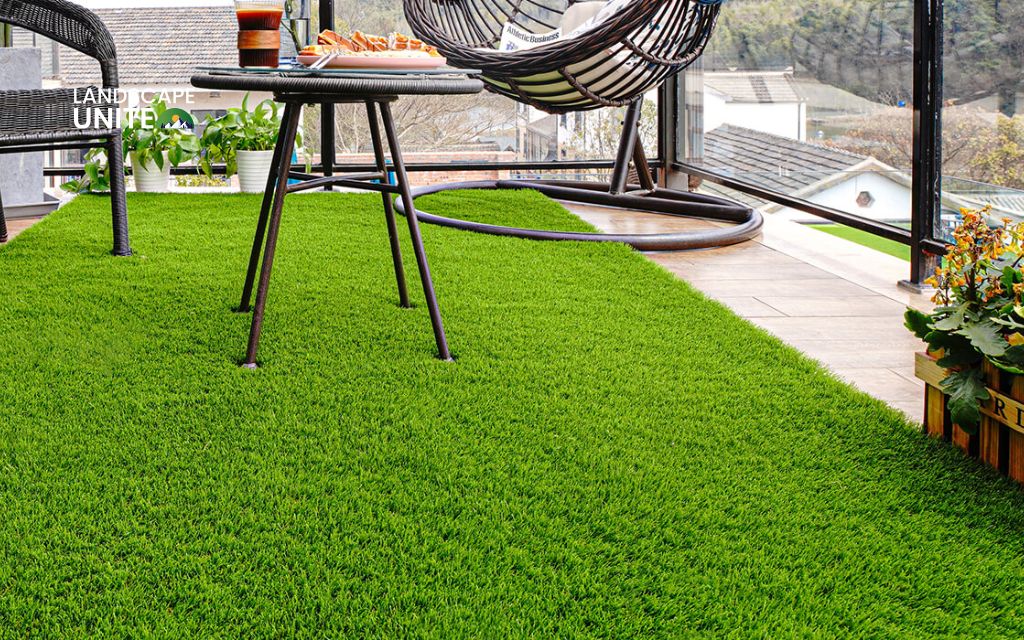
Conclusion
The most common problems with artificial grass include fading, heat retention, odor issues, toxicity concerns, drainage problems, weed growth, damage from heavy use, pile direction inconsistencies, poor seaming, maintenance challenges, and high installation costs.
However, each of these issues has practical solutions that can minimize their impact and extend your turf’s lifespan.
Explore our extensive garden guides for detailed information about artificial grass installation techniques, innovative design concepts, and outdoor solutions that transform your outdoor space into a beautiful, functional environment.
Frequently asked question (FAQs)
What causes artificial grass to fade, and how can I prevent it?
UV radiation from sunlight breaks down synthetic fibers, causing color loss. Prevent fading by choosing UV-resistant turf with 15+ year warranties and providing shade in extreme sun areas.
Is artificial grass safe for pets and children?
Yes, when you select lead-free, non-toxic products. Look for antimicrobial properties and avoid sharp infill materials. Always request safety certifications before purchase.
How do I deal with drainage problems in artificial grass?
Ensure proper grading during installation, install drainage systems, use permeable base materials, and regularly clear debris from drainage holes.
Can artificial grass be repaired if damaged?
Yes. Small tears can be patched, loose seams re-sealed, and damaged sections replaced. Extensive damage may require professional repair.
Is it normal for artificial grass to smell?
No. Persistent odors indicate poor drainage or inadequate cleaning. Address with regular maintenance, proper drainage, and immediate pet waste cleanup.
